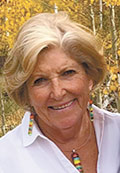June 1, 2021
The Act of Hugging
 By Mary Schricker Gemberling
By Mary Schricker Gemberling
“The best way to appreciate something is to do without it”…………….anonymous
I am a HUGGER! Numerous times in the last year I have spontaneously put my arms out to hug someone but quickly refrained. One recent survey put hugs fourth on a list of thirty things people were most looking forward to after lockdown. Pre-pandemic I never thought about my tendency to hug. I did not grow up in a family of huggers. My mother’s ‘English’ heritage made her rather stand-offish when it came to approaching people and even as a child I remember my mother’s hugs as loose and infrequent. Although my dad occasionally hugged me, I don’t ever remember him or the other men in my early life hugging someone in public. As my curiosity once again gets the best of me, I cannot help but wonder how the practice of hugging began and how I became a hugger in a family of non-huggers?
The origin of the word ‘hug’ is unknown, but two theories exist. The first is believed to have come from the word ‘hugga’ meaning ‘to comfort’ in the Old Norse language, first appearing approximately 450 years ago in Scandinavia. The second theory is that the word is related to the German word ‘Hegel’ which means foster or cherish. Since hugging is usually spontaneous its history as an open act of affection is undocumented. What we do know is that it is only in the past fifty years or so that we have seen a full acceptance of hugging in public. There are thought to be two primary reasons for the widespread adoption of hugging in recent years: the reduced formality of dress code and the loosening of manners with regard to relationships. When in the past hugging was usually confined to relative few people in the privacy of our homes, nowadays it is acceptable to hug in a variety of contexts:
- When greeting friends and family
- As a ‘goodbye’
- When congratulating someone
- To console someone or show support
- Before sports and performance teams begin their performance
One important fact to remember is that not all cultures practice hugging in the same manner. The ritual of hugging and kissing is cemented into the Latino culture from childhood. The gesture is often extended beyond close family members to a wide circle of relatives, friends, colleagues, acquaintances and even during first time introductions. On the other end of the spectrum are the Chinese people. In traditional Chinese etiquette hugs are simply not an option. Although many Chinese people have become more open-minded in recent decades, the idea of hugging remains a discomforting one.
In addition to our cultural mores, both heredity and environment play a role in our frequency and intensity of hugging. Our genes certainly predispose us to certain behaviors but we don’t always engage in the behaviors in the same way. A recent study of twins found that genetics play a significant role in how affectionate women are but the same can’t be said of men who seemed to be more influenced by environmental factors.
What happens when we hug? Our bodies release the “feel good” hormones, including oxytone, dopamine, and serotonin. Once the hormones are released into our bodies we experience feelings of happiness, relaxation, improved mood, and lower levels of depression.
Why is hugging important for our health and well-being? Hugging is an extended form of a fundamental human need, touch. Humans are born helpless; from birth we are reliant on others to feed us, keep us warm and comfort us when we are distressed. Touch plays a major role in early nurturing interactions. Skin-to-skin contact between a mother and her infant helps regulate the infant’s heart and breathing rate, reduces levels of stress hormones, promotes growth and shapes the developing brain. As children grow the presence of human touch continues to affect them in positive ways. The overall benefits can be resistance to infections, reduction in pain, improved social skills, less depression, and reduced cravings for drugs and alcohol. In other words from infancy to old age hugs can help our physical and mental well being.
Hugs cost us nothing. They are quick and easy to give, and the effects take place immediately. Sometimes a hug can change someone’s day. Hugs are so much more than a formality, a greeting, a goodby or a celebration. It’s a physical expression of our desire and need for connection. With social distancing and dramatically reduced human contact, many people are running short on hugs, increasing their susceptibility to mental and emotional health problems.
Last weekend I spent some time with my favorite little huggers, my three grandchildren. I always get more than my share of hugs when I am around them. I think they sense grandma loves to hug and be hugged. The innocence of small children makes them the best huggers of all; they are such free spirits when it comes to expression. Perhaps we all need to be more childlike when it comes to our hugging habits. Virginia Satr, a worldrenowned family therapist, says, “ We need 4 hugs a day for survival, 8 hugs a day for maintenance and 12 hugs a day for growth.” I don’t know about you but after 2020 I need to catch up on my hugging!
“A small hug is worth a million unspoken words”
Mary, a former educator and Seniors Real Estate Specialist is the author of four books: The West End Kid, Labor of Love, Hotel Blackhawk; A Century of Elegance, and Ebenezer United Methodist Church; 150 Years of Resiliency.
Filed Under: Family, Personal Growth
Trackback URL: https://www.50pluslife.com/2021/06/01/the-act-of-hugging/trackback/


